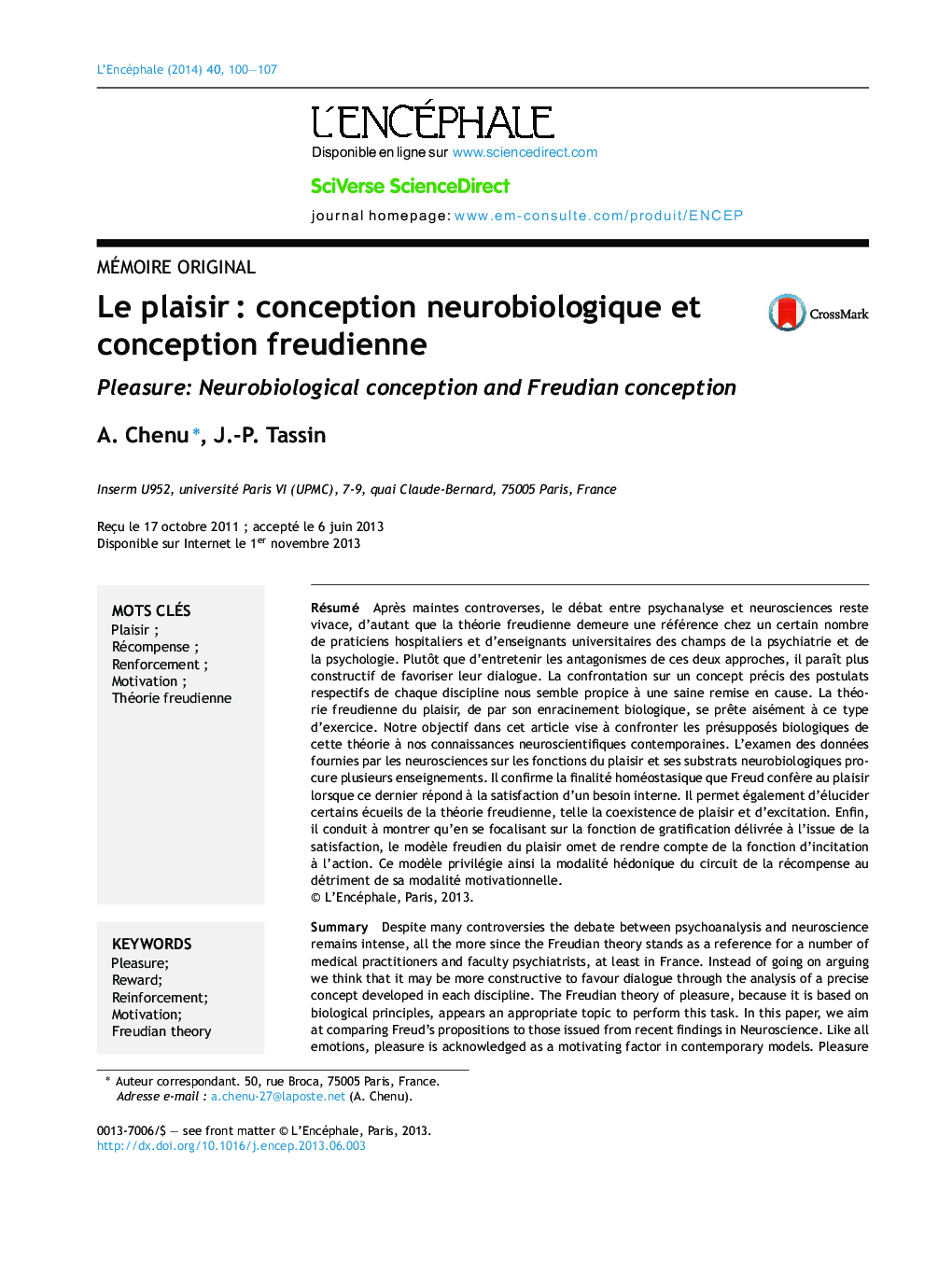| کد مقاله | کد نشریه | سال انتشار | مقاله انگلیسی | نسخه تمام متن |
|---|---|---|---|---|
| 4181848 | 1277148 | 2014 | 8 صفحه PDF | دانلود رایگان |
عنوان انگلیسی مقاله ISI
Le plaisir : conception neurobiologique et conception freudienne
دانلود مقاله + سفارش ترجمه
دانلود مقاله ISI انگلیسی
رایگان برای ایرانیان
کلمات کلیدی
موضوعات مرتبط
علوم پزشکی و سلامت
پزشکی و دندانپزشکی
روانپزشکی و بهداشت روانی
پیش نمایش صفحه اول مقاله

چکیده انگلیسی
Despite many controversies the debate between psychoanalysis and neuroscience remains intense, all the more since the Freudian theory stands as a reference for a number of medical practitioners and faculty psychiatrists, at least in France. Instead of going on arguing we think that it may be more constructive to favour dialogue through the analysis of a precise concept developed in each discipline. The Freudian theory of pleasure, because it is based on biological principles, appears an appropriate topic to perform this task. In this paper, we aim at comparing Freud's propositions to those issued from recent findings in Neuroscience. Like all emotions, pleasure is acknowledged as a motivating factor in contemporary models. Pleasure can indeed be either rewarding when it follows satisfaction, or incentive when it reinforces behaviours. The Freudian concept of pleasure is more univocal. In Freud's theory, pleasure is assumed to be the result of the discharge of the accumulated excitation which will thus reduce the tension. This quantitative approach corresponds to the classical scheme that associates satisfaction and pleasure. Satisfaction of a need would induce both a decrease in tension and the development of pleasure. However, clinical contradictions to this model, such as the occasional co-existence between pleasure and excitation, drove Freud to suggest different theoretical reversals. Freud's 1905Â publication, which describes how preliminary sexual pleasures contribute to an increased excitation and a sexual satisfaction, is the only analysis which provides an adapted answer to the apparent paradox of pleasure and excitation co-existence. Studies on the neurobiological mechanisms responsible for the development of pleasure may help to fill this gap in the Freudian theory. Activity of the mesolimbic dopaminergic pathway is strongly associated with the reward system. Experimental studies performed in animals have shown that increased dopaminergic activity in the ventral tegmental area (VTA, where dopaminergic cell bodies lie) results either from an unexpected reward or, after recognition of the reward characteristics, from the anticipation of the reward. Therefore, anticipation of a satisfaction activates neurochemical pleasure mechanisms and reinforces behaviour which facilitates its obtention. In this way, pleasure contributes to an increased level of organism excitation. In addition to these data, neuroscience studies have confirmed, as proposed by Freud, the homeostatic role of pleasure when the latter is triggered by an internal need. However, these studies have also indicated that, unlike proposed by Freud, pleasure is not only the result of obtaining a satisfaction but has also a role in the promotion of action. In sum, neuroscience suggest that the Freudian model favours the hedonic modality of reward circuit to the detriment of its motivational modality.
ناشر
Database: Elsevier - ScienceDirect (ساینس دایرکت)
Journal: L'Encéphale - Volume 40, Issue 2, April 2014, Pages 100-107
Journal: L'Encéphale - Volume 40, Issue 2, April 2014, Pages 100-107
نویسندگان
A. Chenu, J.-P. Tassin,